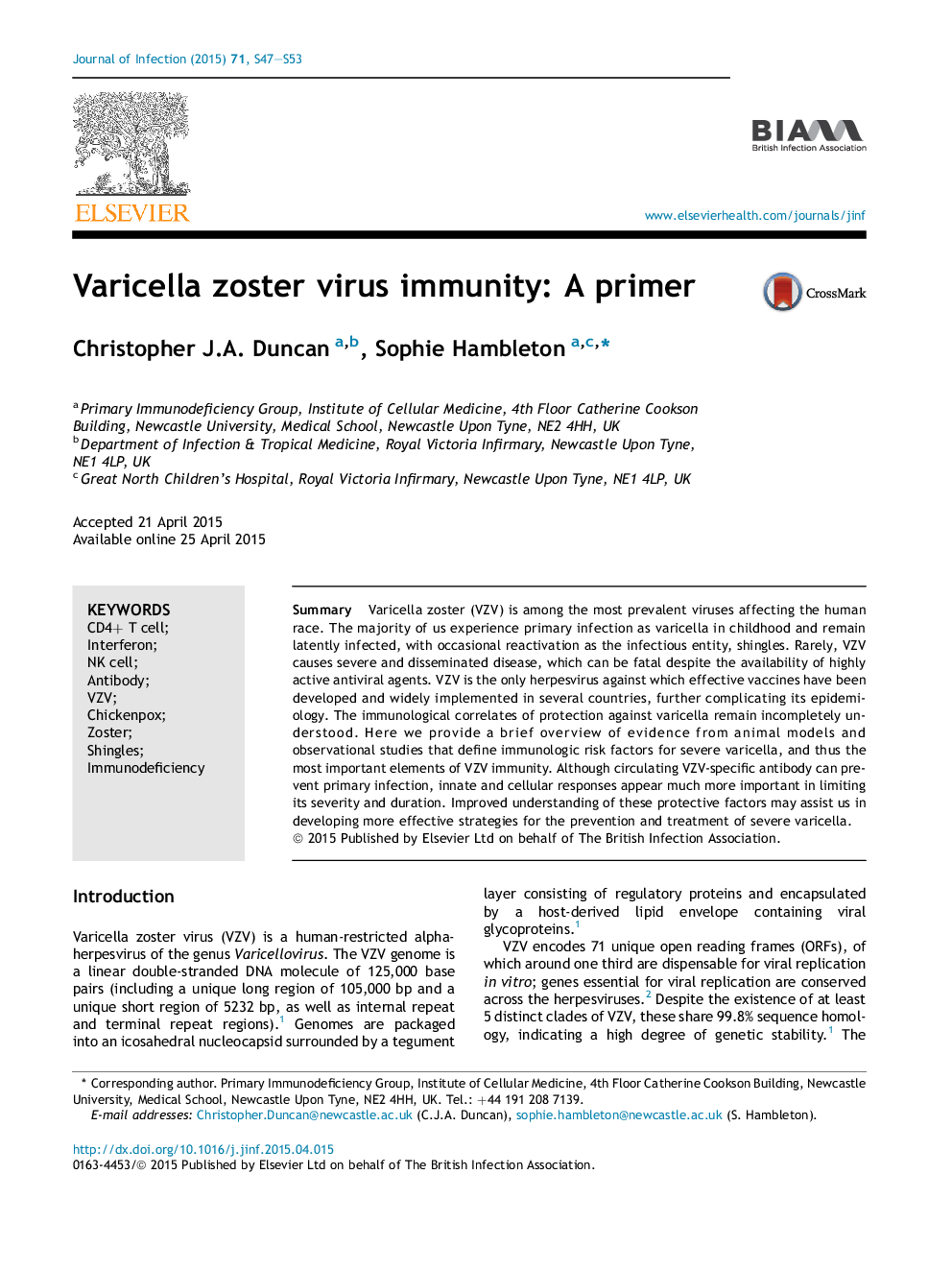| کد مقاله | کد نشریه | سال انتشار | مقاله انگلیسی | نسخه تمام متن |
|---|---|---|---|---|
| 3374403 | 1219611 | 2015 | 7 صفحه PDF | دانلود رایگان |
• Varicella zoster virus (VZV) poses complex challenges to the immune system during the distinct phases of primary infection, lifelong latency and intermittent reactivation.
• Susceptibility to severe VZV is a feature of immunodeficiency.
• Innate immune responses in skin contain primary infection.
• CD4+ T cells are essential for controlling/resolving primary infection.
• The mechanism(s) by which T-cells contribute to VZV control need to be better defined.
SummaryVaricella zoster (VZV) is among the most prevalent viruses affecting the human race. The majority of us experience primary infection as varicella in childhood and remain latently infected, with occasional reactivation as the infectious entity, shingles. Rarely, VZV causes severe and disseminated disease, which can be fatal despite the availability of highly active antiviral agents. VZV is the only herpesvirus against which effective vaccines have been developed and widely implemented in several countries, further complicating its epidemiology. The immunological correlates of protection against varicella remain incompletely understood. Here we provide a brief overview of evidence from animal models and observational studies that define immunologic risk factors for severe varicella, and thus the most important elements of VZV immunity. Although circulating VZV-specific antibody can prevent primary infection, innate and cellular responses appear much more important in limiting its severity and duration. Improved understanding of these protective factors may assist us in developing more effective strategies for the prevention and treatment of severe varicella.
Journal: Journal of Infection - Volume 71, Supplement 1, June 2015, Pages S47–S53
